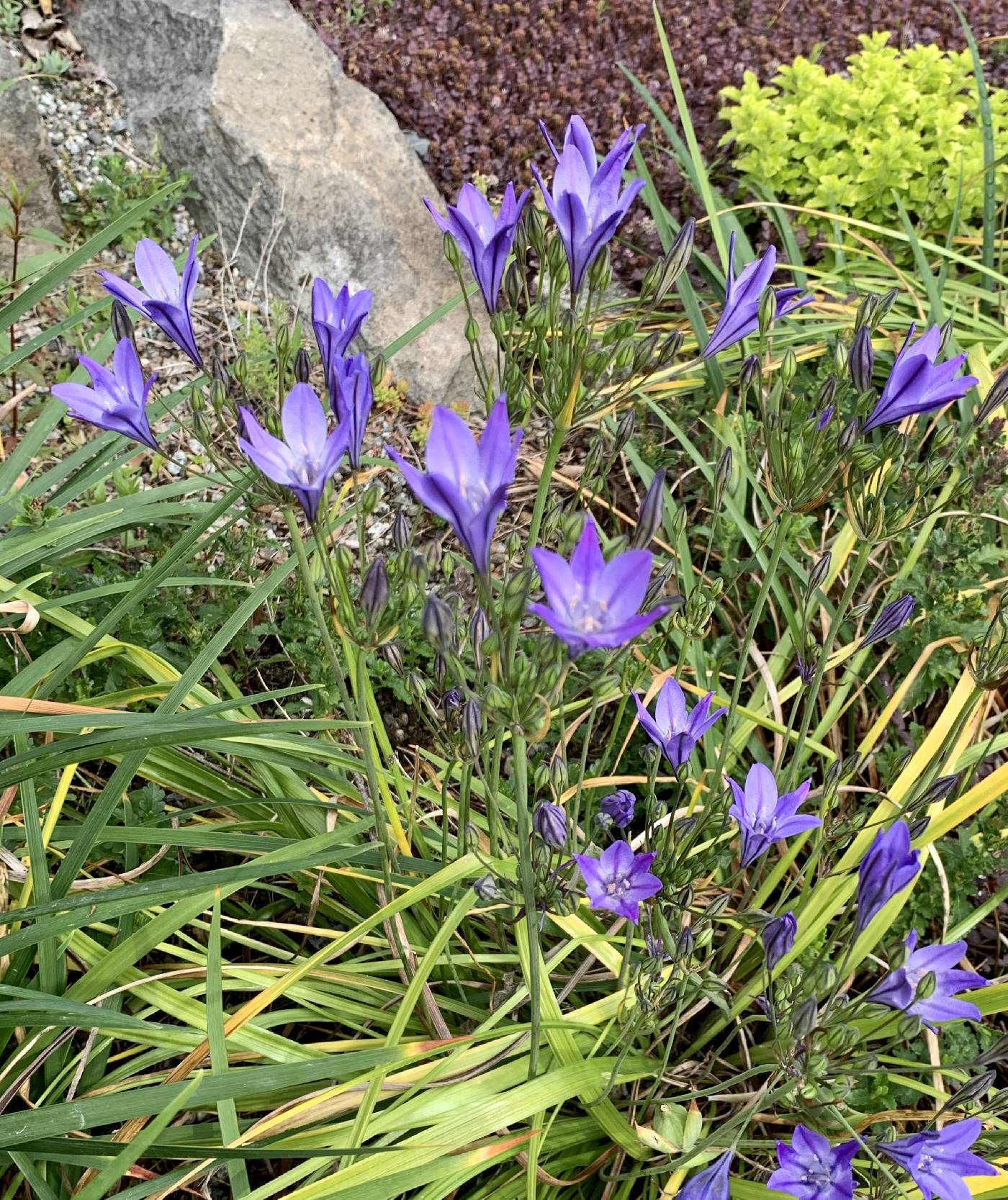
|
Family: Asparagaceae |
Herbs, perennial, scapose, from fibrous-coated corms. Leaves 1-3, basal; blade narrowly lanceolate (linear in Triteleia ixioides), keeled, channeled, glabrous, margins entire. Scape erect, cylindrical, 1-5 mm diam., rigid. Inflorescences umbellate, open, bracteate; bracts green (purplish in T. lemmoniae), ± lanceolate, scarious. Flowers: perianth 6-tepaled, connate proximally into tube of varying length and shape, usually funnelform, lobes similar, usually ascending to spreading; stamens 6, epitepalous; filaments distinct, adnate to perianth tube in 1 or 2 rows, equal or of 2 unequal lengths, free portions flattened, sometimes dilated at base to form triangle, apical appendages usually absent, when present sometimes forming a crown; anthers versatile, usually curving away from stigma; pistil 3-carpellate; ovary superior, green or colored like perianth (yellow in T. peduncularis, white in T. clementina), stipitate, 3-locular, ovules anatropous, 2-several per locule; style 2-4 mm; stigma weakly 3-lobed; pedicel ± erect, often articulate, usually longer than perianth (shorter in T. crocea). Fruits capsular, ovoid, dehiscence loculicidal. Seeds black, ridged on 1 side, subglobose, rounded, coarsely and irregularly pitted, minutely granulate or granulate-reticulate, coat with crust. x = 7, 8. For discussion of relationships, see under Brodiaea. Molecular evidence (J. C. Pires 2000) suggests the artificiality of the subgenera and sections that have been recognized within Triteleia, consistent with R. F. Hoover (1941), who recognized sections for reasons of convenience only. Thus, those infrageneric taxa are not utilized here. Several species of Triteleia are exceedingly variable, and polyploidy is common: multiples of both x = 7 and x = 8 occur, suggesting that chromosomal changes have played a significant evolutionary role within the genus (M. P. Burbanck 1941). Triteleia is widely distributed west of the Rocky Mountains, but its greatest diversity is in the 'Klamath area' of northwestern California and southern Oregon. The corms of some species were eaten by native Americans. Among the most important diagnostic characters within Triteleia are features of the androecium, particularly stamen height and insertion relative to the perianth, and the presence of apical filament appendages. These characters are easily seen in the field with a hand lens. When collecting flowering specimens, one should make a point of mounting a few dissected flowers in a manner that displays these critical characters. The only Triteleia species that does not occur in the flora, T. guadalupensis L. W. Lenz, is endemic to Guadalupe Island off Baja California.
|
This project was made possible in part by the Institute of Museum and Library Services [MG-70-19-0057-19].
Powered by Symbiota



